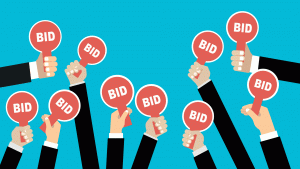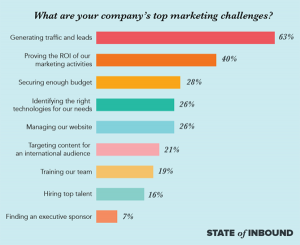No matter how advanced your targeting is, your ad creative is what will catch a potential customer’s eye –– or keep them moving along in their Facebook feed.
What your ad looks like and what it says are incredibly important to the success of your overall Facebook ad campaign.
Below are 24 guidelines to help you make the most of every dollar you spend.
- Showcase high-quality images: You want people to pay attention to your image, not your image quality. Pay attention to angle and lighting. Images with highly saturated colors help the creative stand out against Facebook’s white background.
- Refresh your creative: If you’re targeting the same audience for a while, you’ll start to see lower engagement as the audiences tires of seeing the same image. Refresh your creative once you start to see this drop.
- Use the correct image specs: Observe Facebook’s recommended image width of 600 pixels to avoid having your image resized. If your image gets resized, it may not look the way you intended.
- Minimize text in your image: Ads on Facebook may not include images with text that covers more than 20% of the image’s area. These ads will be disapproved by Facebook.
- Grab your audience’s attention: Photos should be bright and eye-catching, ideally with a white background. Consider using Pixc Photos or Pixelz to remove the background of your image.
- Use a good headline: Grab people’s attention with a compelling headline. Use simple and direct language to describe your product or service.
- Include your product in the headline: Half of ads are viewed in 5 seconds or less. Include the name of your product or service in the headline to ensure that your audience knows exactly what you’re selling.
- Describe your uniqueness: Generate a sense of allure and stand out from the crowd by using words such as “exclusive,” “unique” or “best” to describe your offering. Make sure Facebook users know that no other retailers can truly replicate the experience you provide.
- Keep it short and sweet: Your audience is not going to read an essay about your product. We recommend keeping copy to 25 characters for the headline and 90 characters for the body copy.
- Feature discounts: Include discount information such as “up to 70% off!” or “FREE gift!” in your ads, where possible. Consider creating an exclusive promotion for that channel, such as “use discount code Facebook10 to get 10% off!” Promotions typically increase both your click-through rate and conversion rate.
- Mention price: If your goal is to drive sales, include the price in your ad copy to motivate people to buy. This is especially compelling if you offer low price points.
- Use a number: Some marketers have seen that simply using any number in the headline can help increase the click-through rate. Outside of price and discount, some examples include: “Necklaces, available in 3 sizes,” and “5 looks to change your wardrobe.”
- Include a timeframe: Create urgency with time-based language to compel users to take action. Examples: “now,” “today,” “this week only.”
- Inspire action: Use strong call-to-action copy such as “Shop Now!,” “Learn More,” “Click Here” and “Get a Quote.” Reiterate your message by also adding a call-to-action button.
- Stick to one CTA: Resist asking users to take multiple actions. If you include two messages such as “Connect now!” and “Shop now!”, you muddle your message and decrease its effectiveness.
- Talk to your customer directly: Build a connection with your audience by making the ad about them, not you. Use the word “you” to form a relationship, and explain why your product or service is relevant to their needs.
- Comply with Facebook’s policies: Avoid promoting adult products, weapons and more. Using sexually explicit or violent content is also not allowed. Keep in mind that if you don’t adhere to Facebook’s policies, you risk getting your entire ad account shut down.
- Stay on brand: Ensure your colors, images and voice are consistent with your brand. Keep your advertising consistent across channels so customers can recognize your brand.
- Tie the image to the message: Your message and image should complement each other. This may seem obvious, but it’s a common pitfall.
- Match your creative to your landing page: To maximize your advertising efficiency, the image and copy in your ad should match the image and copy on the landing page. Not only is this a consistent experience for the user, but it may also impact how Facebook’s algorithm calculates your bid price.
- Sequence creative to tell a story: Consider telling a story with your ads over time. For example you can update messaging about a ticketed event from “Get a sneak peek of this new album” to “Buy tickets today to this concert!” to “Last minute tickets available!”
- Align with your goal: One of the most important things to consider when developing creative is your goal. If you’re looking to drive brand awareness, engage prospective customers with compelling and memorable content. If you’re looking to drive sales immediately, encourage users to click on your ads and send them directly to your product pages.
- Measure your results: Look at available metrics to evaluate how people are responding to your ads. Click-through rate (# of clicks / # of impressions) indicates how relevant the ad is to your audience. Look at your conversion rate (# of sales / # of site visits) to determine if your product is being advertised appropriately or if your landing pages have room for improvement. For example, if you show a cute dog in an ad for a cleaning product, you may see high click-through rate with a low conversion rate.
- Test and learn: Try different combinations of images and ad copy to see what works best. Examples: include just the product in the image, show the product being used by people, use an image that incites emotion.
(76)






